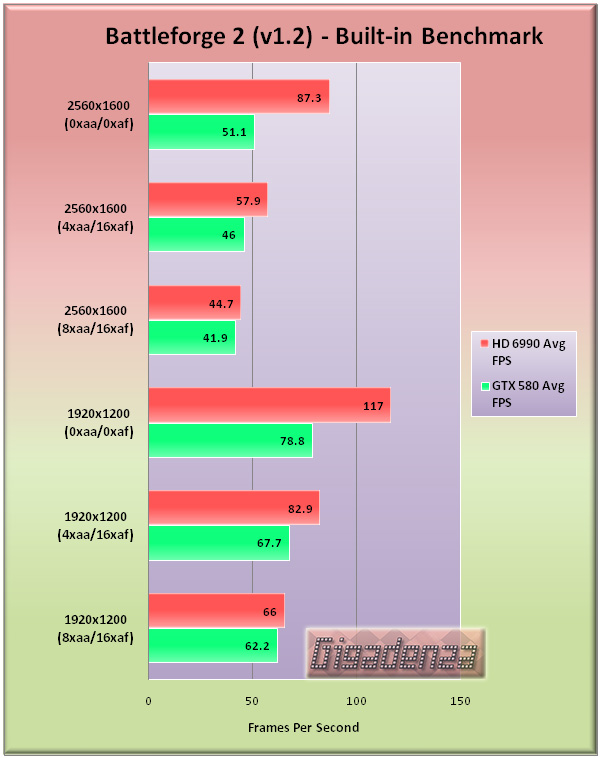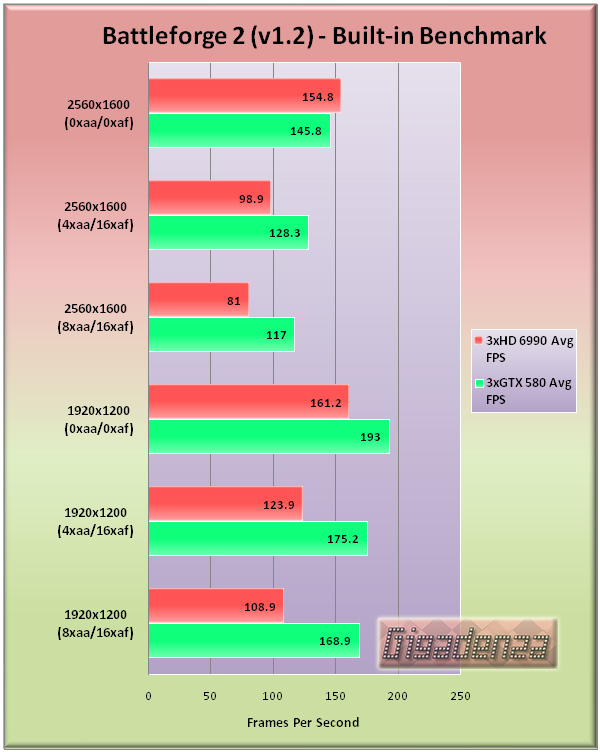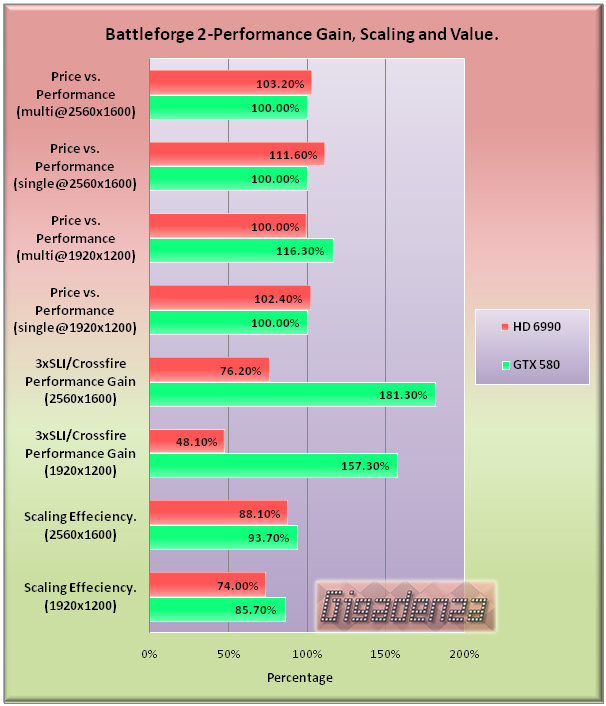HIS ATI Radeon HD 6990 Review. The Benchmarks.
Test 6 – Battleforge 2.
Single vs. Single

As the results confirm, the 6990 does indeed maintain a lead across the board at both resolutions though it must be said its advantage dwindles significantly once we move to 4xaa/16af, then again, to almost nothing, at 8xaa/18af. Even the most ardent of ATI fans would have to admit that in this case, the 580s efficiency when applying eye candy is nothing short of astounding.
Crossfire vs. SLI.

The same pattern yet again, three 580s out-muscle dual 6990s in all but one of the six tests and once more, the latter’s strongest results come without any eye candy applied, thereafter, the gap becomes ever wider the more we increase it. To ATI’s credit, the difference is a little smaller at 2560×1600 and frame rates were silky smooth at all times with no evidence of micro-stutter, a feat the memory starved 5970 would no doubt struggle to match.
Performance Analysis.

If the CPU has been a hindrance throughout some of our previous tests, there is very little evidence of it spoiling this party! Both cards demonstrate their most efficient scaling so far, a testament to how GPU intensive Battle Forge 2 remains.
Focusing on the results for 2560×1600, the performance gain of 181% achieved by the trio of 580s puts them just 19% shy of “perfect scaling” (which would be a 200% performance increase, 100% for each additional card). The 6990s in crossfire aren’t to be sniffed at either, at the higher resolution a second card affords the user a 76% performance bonus (only 24% short of perfect scaling) and at 1920×1200 a slightly less impressive though still highly respectable 48%.
Moving onto value for money, one on one, it’s the 6990 which once again burns your cash with a broader smile. At the lower and higher resolutions, its overall performance advantages were 27.4% and 36.6 which, if we then subtract 25% (the minimum winning margin required to justify the price) converts to 2.4% and 11.6% better value in each case.
In the multi-card comparison, three 580s overhauled two 6990s by 36.3% at 1920×1200 but only 16.8% at 2560×1600, since the winning margin they needed was 20%, this means they represent significantly better value at the lower resolution but slightly worse at the higher.




